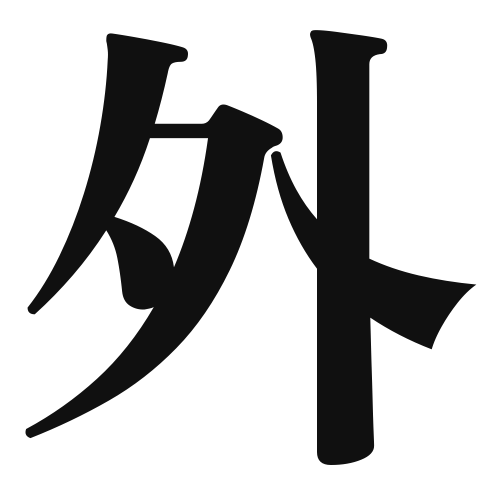1. Overview of Meaning
The kanji “外” (pronounced “soto” or “gai”) means “outside” or “external.” It is used to refer to things that are beyond a certain boundary or limit, often indicating a location or context that is not within a specified area.
2. Formation and Radical
Formation of the Kanji: The kanji “外” is a phonetic-ideographic character (形声文字). It combines the meaning of “outside” with a phonetic component that suggests its pronunciation.
Radical: The radical for “外” is “夕” (evening), which is found at the bottom of the character. This radical often relates to concepts of time or the end of the day, symbolizing the transition from inside to outside.
3. Examples of Usage
Common Words and Phrases:
- 外出 (がいしゅつ, “gai shutsu”) – going out
- 外国 (がいこく, “gai koku”) – foreign country
- 外食 (がいしょく, “gai shoku”) – eating out
Example Sentences in Daily Conversation:
- 今日は外に出かけます。 (きょうはそとにでかけます。) – I will go outside today.
- 外国に行くのが楽しみです。 (がいこくにいくのがたのしみです。) – I am looking forward to going to a foreign country.
4. Synonyms and Antonyms
Similar Kanji:
- 中 (ちゅう, “naka”) – meaning “inside” or “middle.” This contrasts with “外,” which refers to the outside.
Antonyms:
- 内 (うち, “uchi”) – meaning “inside.” This is the direct opposite of “外.”
5. Cultural and Historical Background
Relation to Japanese Culture: The concept of “外” is significant in Japanese culture, where the distinction between inside (内) and outside (外) often reflects social boundaries and etiquette.
Proverbs and Idioms:
- 外見 (がいけん, “gaiken”) – meaning “appearance,” which emphasizes the importance of how things appear on the outside.
